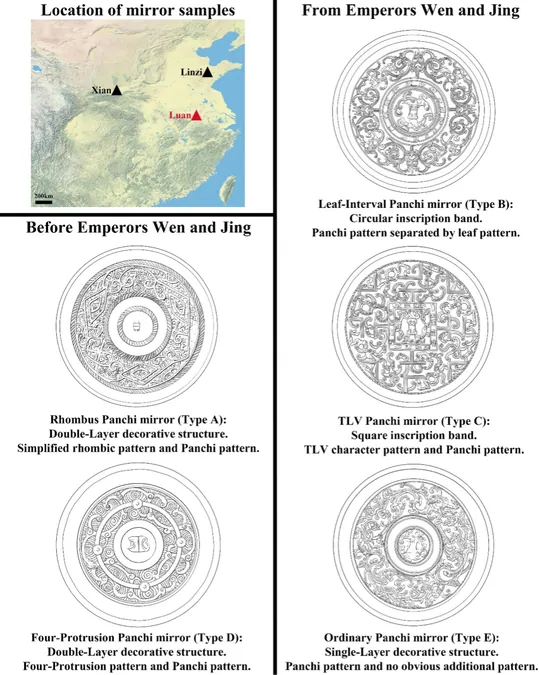
Unmasking Healthcare's Gender Bias: Why Midlife Women Are Being Left Behind and How We Can Change It
2025-09-17
Author: Sarah
In today's world of artificial intelligence and data-driven healthcare, we often believe we're making universal strides in medical progress. However, a shocking reality lurks beneath the surface: midlife women are disproportionately overlooked in the healthcare system.
The root of the issue isn’t merely outdated medical literature; it's a significant bias in healthcare data. When the datasets that shape modern medicine fail to adequately represent women, particularly during pivotal life phases like perimenopause and menopause, we face a situation of incomplete science and systemic neglect.
Understanding the Gender Data Gap in Healthcare
For far too long, biomedical research has largely been male-centric, with male bodies wrongly positioned as the standard. Women’s unique hormonal cycles and reproductive changes have often been deemed too 'complex' for early-stage trials, resulting in a foundational medical dataset that leaves half the population unaccounted for.
The implications are staggering. Historically, women have faced underrepresentation in clinical trials, particularly until the 1990s. Today, they remain underrepresented in studies related to cardiovascular disease, oncology, and neurology—conditions deeply linked to hormonal changes in midlife.
Moreover, menopause and hormone replacement therapy (HRT) remain understudied, despite affecting every woman. Essential long-term health data regarding hormone fluctuations is alarmingly scarce, leaving many women without evidence-based resources.
Why Midlife Women Are Unduly Affected
Although the gender data gap exists across all age groups, midlife women face a unique, double disadvantage. Their biological shifts during menopause coincide with a healthcare system that often overlooks their realities.
Menopause: An Afterthought in Medical Research
Menopause represents a significant physiological transition. As estrogen and progesterone levels drop, women experience various symptoms, but research funding in this area is disproportionately low. Symptoms are too often dismissed as mere 'aging,' rather than being treated with necessary interventions like HRT.
Rising Health Risks in Midlife
Perimenopause is also aligned with heightened risks for conditions like cardiovascular disease and osteoporosis. Estrogen traditionally protects heart and bone health, but as levels decline, those risks rise. Data that includes comprehensive health outcomes for women, especially in relation to HRT, is desperately needed.
The Silent Suffering of Women
Societal stigma surrounding menopause creates additional barriers. Many women report receiving dismissive treatment from healthcare providers when discussing their symptoms or treatment options, perpetuating a culture of silence and ongoing neglect.
Data Bias: The Algorithm Dilemma
AI systems, intended to enhance diagnosis and care, are also tainted by biased inputs resulting in skewed outputs.
For instance, cardiac risk scores generated by algorithms often lack accuracy for women, who present symptoms differently than men. Dosing models predominantly rely on male physiology, which may lead to adverse side effects for women.
Without extensive datasets on women undergoing HRT, algorithms guiding treatment options are severely deficient, denying clinicians robust, evidence-supported recommendations.
Solutions to Bridge the Gap
Addressing healthcare bias is complex but achievable through concerted effort across technology, clinical practices, and policy.
1. Build Inclusive Datasets
Healthcare must prioritize gathering data on women’s health across various life stages, emphasizing perimenopause and menopause.
2. Design Bias-Aware AI
AI developers should conduct audits to ensure algorithms account for gender, age, and hormonal states, making them more accurate.
3. Increased Research Funding
Funding agencies need to champion women’s health research, especially focused on hormone therapy, to provide evidence that informs both AI systems and clinical standards.
4. Enhanced Clinician Training
Medical professionals must receive thorough training on recognizing and treating menopause-related symptoms, including detailed education on HRT options.
5. Patient-Centric Digital Health Solutions
Telehealth and digital health platforms could address gaps left by traditional systems, providing customized care and treatments based on individual needs.
Policy Changes for Lasting Impact
Healthcare doesn’t just require clinical adjustments; systemic policy changes are crucial. This includes enforcing gender equality in trials and ensuring transparency in AI models.
Towards a Fairer Healthcare Future
Addressing bias in healthcare efficacy isn't simply a matter of equity—it's about improving patient outcomes. Diverse datasets lead to better treatments and algorithms for everyone. For midlife women, this translates to swifter diagnoses, more effective treatments, and an enhanced quality of life.
By incorporating diverse data reflecting the realities of women, healthcare can evolve past the outdated 'one-size-fits-all' narrative. It’s essential to address these disparities, focusing on inclusive solutions, accurate datasets, and comprehensive insider narratives.
A Call to Action
For too long, data bias has marginalized women, especially in crucial life stages like menopause. The evidence for change is undeniable, paving the way toward rectifying decades of oversight. Solutions are here, and it’s time for healthcare to progress for everyone.


 Brasil (PT)
Brasil (PT)
 Canada (EN)
Canada (EN)
 Chile (ES)
Chile (ES)
 Česko (CS)
Česko (CS)
 대한민국 (KO)
대한민국 (KO)
 España (ES)
España (ES)
 France (FR)
France (FR)
 Hong Kong (EN)
Hong Kong (EN)
 Italia (IT)
Italia (IT)
 日本 (JA)
日本 (JA)
 Magyarország (HU)
Magyarország (HU)
 Norge (NO)
Norge (NO)
 Polska (PL)
Polska (PL)
 Schweiz (DE)
Schweiz (DE)
 Singapore (EN)
Singapore (EN)
 Sverige (SV)
Sverige (SV)
 Suomi (FI)
Suomi (FI)
 Türkiye (TR)
Türkiye (TR)
 الإمارات العربية المتحدة (AR)
الإمارات العربية المتحدة (AR)